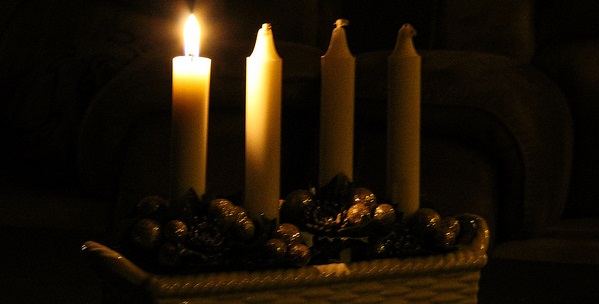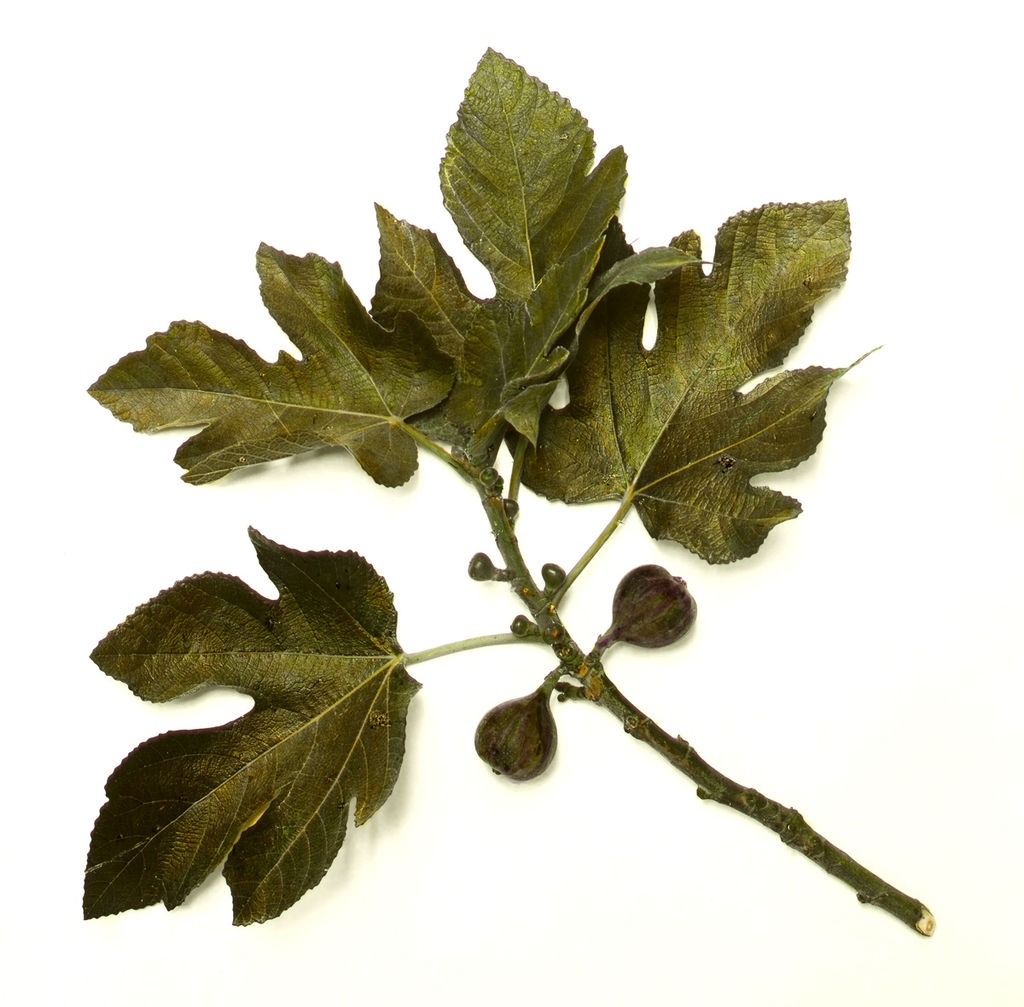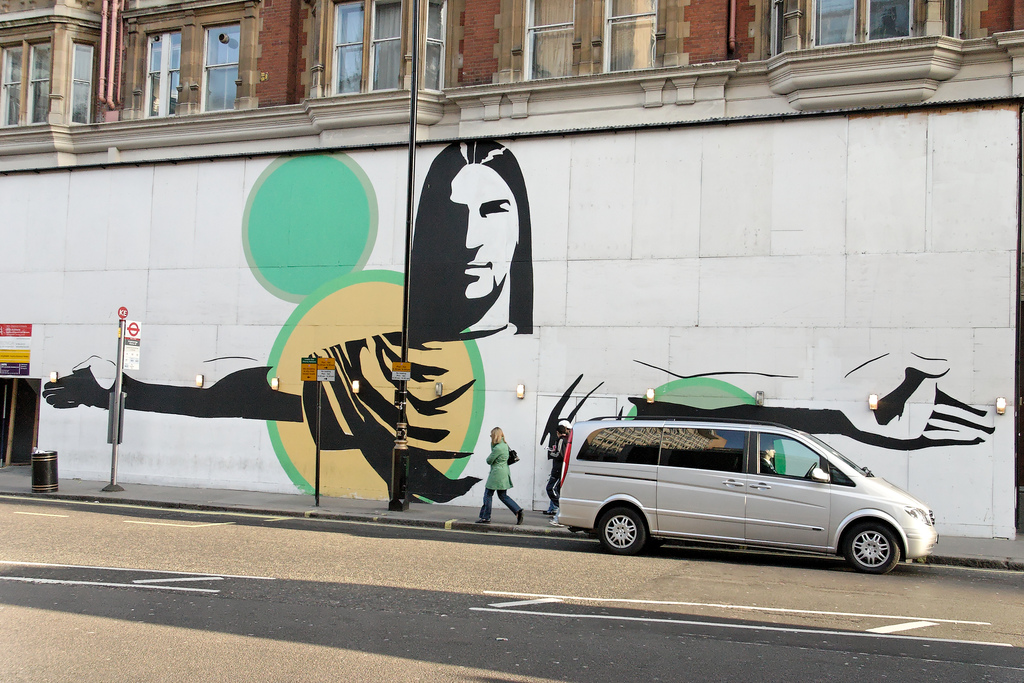Here are the readings for Advent 1C

First, let me wish you a Happy New Year… As far as the Church is concerned, Advent starts a new year – a new liturgical year. At the end of December there will come a time that also calls itself New Year’s… but while January 1st, New Year’s Day may claim greater notoriety, it is just another day of Christmas to the Church.
Advent is the beginning of something, but it can feel like little more the prelude to Christmas. Everything in Advent seems to point to Christmas – whether it is candles on a wreath or chocolates behind little doors in a calendar… Advent is only important because what comes next is extremely important… And that is just not true, even though it is not false.
I came across a quote that seems especially important for Advent: “Look afar and see the end in the beginning.” Be sure to note that is IN the beginning, not FROM the beginning.
Where does this pearl of wisdom come from? Not scripture. Perhaps in some mystical writings… maybe in some eastern source – it seems like something the Buddha may have said… at any rate, some weighty source. But surprise! It is from a fortune cookie. God works in mysterious ways.
See the end in the beginning. Here we are, just at the beginning of Advent. What of an ending can we see?

It would be no fun at all if there were only one ending showing itself in this beginning. It would be wonderful to see the end of COVID in this beginning of Advent. The most obvious end that shows up now is Christmas itself. We are waiting for the coming of Jesus – that is an end of Advent that we can see in its beginning.
As a sort of collective secular/sacred amalgam we have a social concept of Christmas. It is a happy, warm, lovely thing… all sweetness and light… and yet this concept is very different depending on where you are. Where I grew up the concept involves a lot of snow on the ground and sleds and such. Here the notion of a braai and a time at the beach seems to be a Christmas thing. Good food and good friends are the constant in this concept of Christmas. This is what I want to prepare for in Advent. I see this end in the beginning of Advent.
This is, sadly, not a very substantial view of Advent nor the reality of Christmas. Jesus doesn’t come into a fantasy world. However well we decorate, this is not a world of joy and happiness. It has great beauty, but it is also a world of sorrow, of injustice, of genocide, of prejudice, of corruption. In other words, it is the same world into which Jesus was born two millennia ago.
It was a cruel and a dangerous world then as now. Jesus did not arrive in a world of decorated trees and cozy scenes. He arrived in arrived in a world that had no space for him at all. He arrived in a barn and bunked with animals – because the polite society (that’s us) couldn’t accommodate him – we live in the same world.
Anyone with their heart set on a silent, holy, calm, and bright Christmas night, needs to look afar and see the end in the beginning. Pay attention to Luke. In the Gospel for today, Jesus tells us there will be signs among the stars (these are warning signs) and there will be distress among the nations. People will faint from fear. The coming of Jesus is not meant to be the end of strife. Jesus does not come to fix all the things that we have messed up. If anything, the coming of Jesus means that things will get more difficult. That is what Luke is telling us.
Welcome to Advent.
I gave serious thought to ending this sermon here… it would be dramatic and clever… but it wouldn’t be right. A message that says things are bad and they will only get worse is not the message of Advent. It is true that things are bad, and they likely will get worse. But that isn’t seeing the end in the beginning. It is only seeing the beginning
The message of the Gospel, the good news of Jesus, is not one of sorrow. At the same time, it’s not one of simple happiness. In a culture of sound bites and slogans, the complex and rich good news of Jesus too often gets simplified into one of two messages – “Jesus loves you very much, so repent or you’re going to hell”; or “Jesus loves you very much and wants you to be very rich”. Neither of these has much to do with Jesus. Neither of them is the message of Advent.

In the middle of this, according to Luke, there is a fig tree. As summer approaches, its limbs grow tender, and it puts forth leaves. It does what fig trees do.
Please – could Luke give us a clearer and more obvious illustration…
Jesus seems to be saying that as you can tell summer is coming by watching the fig tree, so too you can tell that God is coming by watching… something…
But the fig tree doesn’t do anything out of the ordinary. It doesn’t do anything unexpected. A philosopher might say it expresses its essential “fig-tree-ness.” As summer approaches, its limbs turn tender and it puts out leaves. But it wouldn’t be a fig tree if it didn’t. And a skilled agricultural society, like the world into which Jesus was born, hardly needs a fig tree to tell them summer is coming… We know that summer is coming to Volmoed, but I don’t see any fig trees about.
Perhaps this fig tree is telling us something more complex. Perhaps its lesson is not about changing seasons, but about ways of living. It lives in the world and responds to it by doing fig tree things.
Trees turn up in a number of places in our tradition. We start in the beginning with the Tree of Life, the Tree of Knowledge of Good and Evil. Our tradition is littered with fig trees. When post-apple Adam and Eve seek to cover themselves, they turn to leaves of the Fig Tree. The Land promised in Deuteronomy is filled with milk, honey, and fig trees. In the Gospels, Jesus curses a fig tree, and it withers. And in this morning’s Gospel, we are asked to consider a fig tree. But the great tree reference is, of course, the cross. Jesus is nailed to the tree. See the end in the beginning.
So, this image that Jesus gives us to consider, the fig tree, is ancient and complex… Beautiful and terrible.
In asking us to consider the Fig Tree, I think Jesus is calling us to live in the world and be present. As the fig tree does what it is called to do, so we, followers of Jesus, are to do what we are called to do. Signs and warnings notwithstanding, we are to get about the business of following Jesus.

What Jesus calls us to do is not obscure. If we are to live our baptismal covenant with integrity, then we will have to care for the sick, the poor, those who have no power and no defense. We will have to pray and worship God and be prepared to treat the least of God’s children as nothing less than God’s children. We will have to resist the seductive call to accumulate wealth. We will have to be humble. We will have to love our neighbors and ourselves. We will have to make peace. Simple enough… Can we see these ends in this beginning?
Be on your guard, Jesus says, so that your hearts are not weighed down with drunkenness, dissipation and worries. Now maybe it’s just me, but I thought drunkenness and dissipation were the things we do to keep our hearts from being weighed down…
Being on guard is not a waiting game. Maybe this is another lesson of the fig tree. The fig tree isn’t in any way waiting for spring, or anything else. It’s just doing the right thing at the right time. This is a lesson we can well learn in Advent.
We look for the coming of Jesus, but we do not wait for the coming of Jesus. It would be nice if, as soon as Jesus gets here, then we can get to work following Jesus, but it doesn’t work that way. We stay on guard, awake in our faith… faith that must be lived. Christian faith is active. We live our lives in the faith that Jesus could return at any moment. We live our lives in the faith that Jesus has already returned, is already with us. We see the end in the beginning.
Being on guard doesn’t mean sitting around silently, pensively, nervously drumming our fingers. It means getting about the business of using the gifts we have been given to build God’s kingdom – just as the fig tree gets about the business of being a fig tree.
This is Advent, the start of a new year. If we look afar, we can see the end in the beginning and the beginning in the end.
Is there a place in what we see for Christmas carols and a braai? I surely hope so. A vision without beauty is no vision. It’s a horror show.
But if we think we have made the world beautiful because we have decorated, then we are living an illusion. In this beginning time, this Advent, we don’t just see the end, a beautiful world where justice flows like a mighty river… we become the end in this beginning. We become the healing power of God’s love in a very hurting world.
